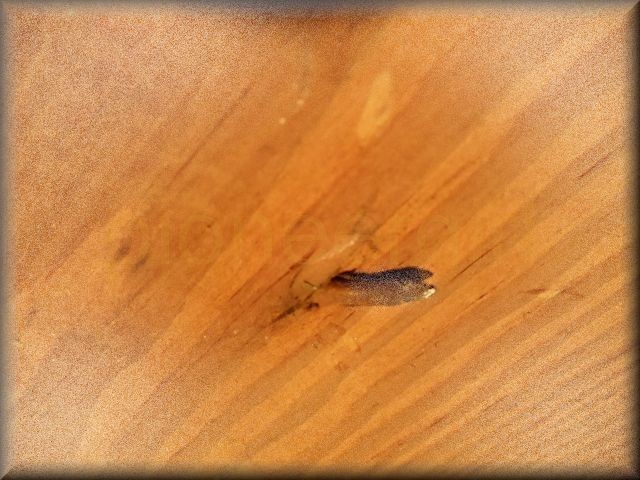clinched nail

clinch. To make, or hold, fast, by folding or embracing closely; to tighten by bending or folding together; to grasp; as, to clinch a nail, to make it fast by bending over the point. — Webster, 1882
 It is not a fact that a nail driven through and properly clinched will hold more than a screw. I have tried it. The only difference would be that a nail clinched you can’t take out if you want to remove it; a screw you can. – Carpenter’s testimony in a trial, 1894.
It is not a fact that a nail driven through and properly clinched will hold more than a screw. I have tried it. The only difference would be that a nail clinched you can’t take out if you want to remove it; a screw you can. – Carpenter’s testimony in a trial, 1894.
 In The Long Winter, Laura Ingalls lies in bed and looks at the frost on every clinched nail overhead. The ceiling over her head was the underside of the rafters to which the roof shingles were nailed. The nail conducted the cold outside air temperature along its metal length to the part exposed inside the building, and the temperature inside was cold enough for ice crystals to form on the metal. Today, most houses are insulated and have ceilings, so nails attaching roof boards or shingles aren’t visible, but you can probably find many exposed – and clinched – nails in an attic or unfinished basement.
In The Long Winter, Laura Ingalls lies in bed and looks at the frost on every clinched nail overhead. The ceiling over her head was the underside of the rafters to which the roof shingles were nailed. The nail conducted the cold outside air temperature along its metal length to the part exposed inside the building, and the temperature inside was cold enough for ice crystals to form on the metal. Today, most houses are insulated and have ceilings, so nails attaching roof boards or shingles aren’t visible, but you can probably find many exposed – and clinched – nails in an attic or unfinished basement.
A clinched nail is one that has been hammered entirely through the wood so that some of the pointed end sticks out of the other side. The sticky-out nail ends are hammered at right angles into the wood so they lie flat. Clinched.
The navigation button photo shows a clinched nail in my 100-year-old house. The photos shown here are of an old board removed when tearing down a wall. The top photo shows the nail hammered into the wood; the bottom one shows the point that passed through the board and was bent (clinched). Nails are clinched to keep them from coming out, but also to protect anyone from getting cut or scraped by the exposed nail point.

clinched nail (TLW 10)

